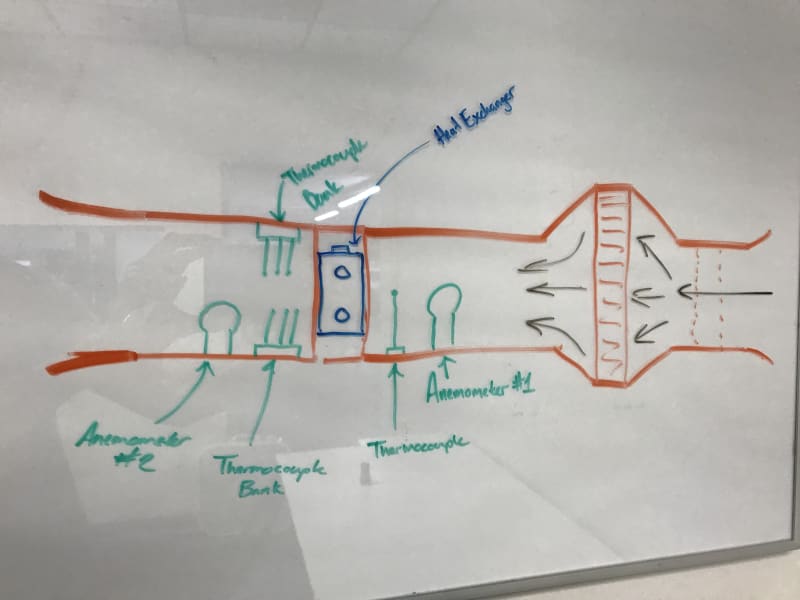I am in a predicament: Would you use an anemometer or pitot tube with a pressure transducer to collect wind speed measurements in a low speed wind tunnel?
Here's the catch: This is a heat transfer wind tunnel, specifically for heat exchanger rating, therefore the air passes through the entire core, and not around it like an aerodynamic study.
I only bring that up due to the pressure wall that will exist at the face of the heat exchanger's core, and for the fact that the air being metered fore and aft will be different temperatures (densities).
Neither an anemometer nor pitot tube is fully immune to that change in density, but my thinking is that the pressure transducer is going to win here, even though I know that density isn't that big of a change.
I really just want to bounce the conversation around and make sure I'm thinking about this correctly because that pressure wall will affect how an anemometer spins if there is turbulence or a low pressure zone which is aft of it.
That being said, I understand that placement is everything here, as either option will be spaced away from the pressure wall zone by enough distance, but as close to the heat exchanger core as possible to keep the equation for studying these valid too.
I believe that the anemometer will be more useful with what we're doing, and it'll save me from having to do my initial calibration for the pitot tube to read accurate wind speed in the test section. Is this agreeable?
Here's the catch: This is a heat transfer wind tunnel, specifically for heat exchanger rating, therefore the air passes through the entire core, and not around it like an aerodynamic study.
I only bring that up due to the pressure wall that will exist at the face of the heat exchanger's core, and for the fact that the air being metered fore and aft will be different temperatures (densities).
Neither an anemometer nor pitot tube is fully immune to that change in density, but my thinking is that the pressure transducer is going to win here, even though I know that density isn't that big of a change.
I really just want to bounce the conversation around and make sure I'm thinking about this correctly because that pressure wall will affect how an anemometer spins if there is turbulence or a low pressure zone which is aft of it.
That being said, I understand that placement is everything here, as either option will be spaced away from the pressure wall zone by enough distance, but as close to the heat exchanger core as possible to keep the equation for studying these valid too.
I believe that the anemometer will be more useful with what we're doing, and it'll save me from having to do my initial calibration for the pitot tube to read accurate wind speed in the test section. Is this agreeable?

![[thumbsup] [thumbsup] [thumbsup]](/data/assets/smilies/thumbsup.gif) Do you have an opinion on which test instrumentation you'd prefer as well?
Do you have an opinion on which test instrumentation you'd prefer as well?![[upsidedown] [upsidedown] [upsidedown]](/data/assets/smilies/upsidedown.gif) .
.